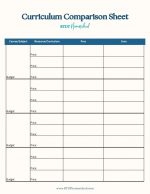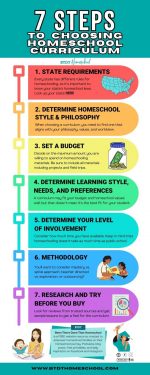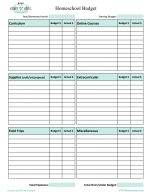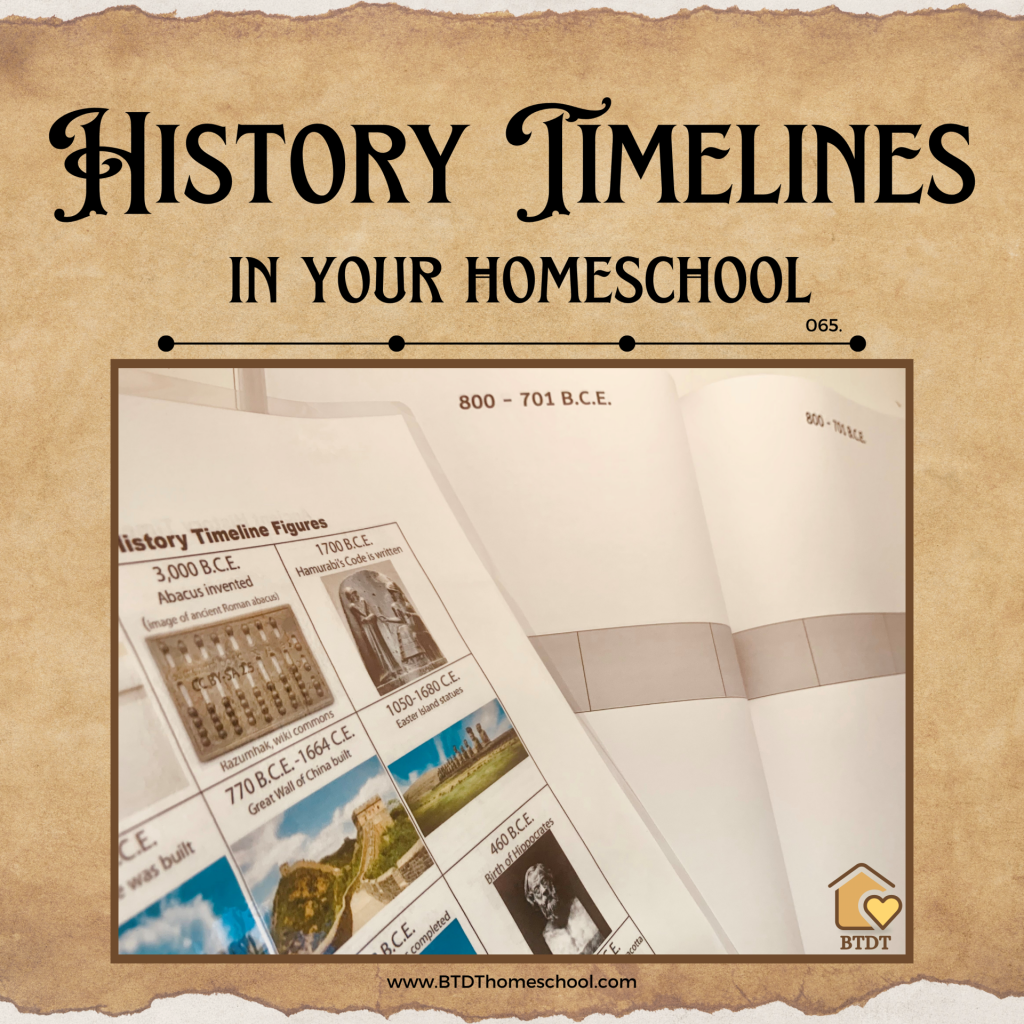
7 Steps to Choosing Curriculum
There are a lot of things to consider when deciding what to use. Don’t waste time and money on curricula that doesn’t work for your family. By following the 7 STEPS that we lay out for you, you will be able to find exactly what works for you to set your homeschool up for success. We also discuss how homeschooling looks different at different ages and more.
Tune in!

Episode 037:
1. Click PLAY Button Above ^^ to listen here.
2. OR Listen on your favorite podcast platform:
Scroll Down for this week’s Freebie:
Curriculum Comparison Sheet (pdf)
Brand New to Homeschooling?
GETTING START PAGE >>
Kindergarten Page >>
High School Series >>
Show Notes
As veteran homeschool moms, we understand the challenges of sifting through the myriad of curriculum options available. There’s an overwhelming amount of options out there and it’s hard to decide just where to begin. Going online and searching homeschool curriculum is going to give you over one million results. This is why you want to spend time figuring out WHAT you want to teach and HOW you want to teach it. This will help narrow down those options and help you to find the perfect program for your family without wasting a ton of time, effort, or money.
If you’re withdrawing your student from a traditional school environment, be sure to check out our Deschooling episode, which is a vital step you don’t want to skip before you’re even thinking about curriculum. Deschooling is fortunately something you can do WHILE researching and deciding on curriculum. Do not feel like you need to have this all planned out in advance and leave your child in a bad environment that isn’t working before withdrawing them from school. During this time, it’s important that you take this time to deschool too! The easiest way for us to get out of that ‘Public School Mentality” is to educate ourselves by reading about homeschooling and creating Lifeling Learners. You can do that with these TOP 10 Books Every Homeschool Parent Should Read.
Choosing curriculum
We often see questions like: “what is the best curriculum for 5th grade?” or “what curriculum do you suggest for my 10 year old?” And of course, people are super keen to jump in there with suggestions right away. But those suggestions are what works for *them*. Before we suggest anything to you, we need more information!
Choosing a curriculum is so personal, so take recommendations as a list of places to check out but know there’s no such thing as a “best” curriculum, regardless of price. The best curriculum is the one that fits you and your family!
And before you even start down the path of choosing a curriculum, decide if you will (or need to) follow the state’s curriculum outlines, do your own thing, or a combination of both. Consider what subjects you want to make sure you cover – like core subjects-math, reading, and writing and what things you personally consider as extras. Involve your child! Ask them and consider their interests and curiosities.
From there you will want to follow the next 7 steps:
Step 1:
Check with your State Requirements (6:00)
The first step is to find out what your state requires. Every state has different rules for homeschooling, so it’s important to research your state’s homeschool laws. And note that there is often a difference between what a state requires for homeschoolers and what a state requires of public-school students. Sometimes, these may not be the same things at all. To make this easier for you, we created a complete guide: State Homeschool Laws, and we summarize all this information including compulsory age and subject and testing requirements, which can vary from state to state. Don’t worry if your state has stricter rules; remember that homeschooling is legal in all 50 states, and you absolutely are within your rights to do this!
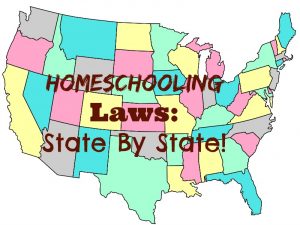
In some states, homeschool students may need to track attendance or hours, and keep certain kinds of documentation of work completed. Students may be required to take standardized tests or complete evaluations or provide documentation of meeting certain standards. Knowing your state’s requirements is going to help you choose the right curriculum. You’ll want to strike a balance between what your state expects and what works best for you and your family. Remember, you have the freedom to tailor and individualize this – this is one of my favorite things about homeschooling! You’ve got this!
Step 2:
Determine your Homeschool Style and Philosophy (7:40)
To determine your home, school, style and philosophy, it’s important to understand your core beliefs and values regarding education. When choosing a curriculum, you need to find one that aligns with your philosophy, values, and worldview. Here are some points to consider:
Do you want a Secular, Non-religious curriculum
You may prefer a curriculum that focuses on academic subjects without any specific religious influence. Secular curriculum is designed to provide a neutral educational experience, free from any particular religious worldview.
There’s a lot of reasons why families choose Secular Curriculum – even a lot of religious families choose a secular curriculum.
There are so many different types of faiths and religions and often the creators and the program don’t align with a family’s beliefs. Those families typically choose a curriculum without religion, and then teach their moral, ethical and religious values outside of a curriculum.
Or you may want a Faith-based
Curriculum: On the other hand, if incorporating your religious beliefs into your children’s education is important to you, you may opt for a faith-based curriculum. These curricula integrate religious teachings and values into the academic subjects.
Each family has unique preferences and approaches to homeschooling. Familiarize yourself with different homeschooling styles:
Traditional Homeschooling
- Follows a structured and formal education model similar to traditional schools.
- Involves textbooks, workbooks, and teacher-led instruction.
- Focuses on following a predetermined curriculum and meeting specific learning objectives.
Classical Homeschooling
- Draws inspiration from ancient Greek and Roman education methods.
- Emphasizes the development of critical thinking, logic, and rhetorical skills.
- Follows a three-stage model known as the trivium (grammar, logic, and rhetoric).
Charlotte Mason
- Focuses on living books, nature study, and the development of good habits.
- Values a broad and liberal arts education, incorporating subjects like literature, art, music, and nature.
- Utilizes narration and short lessons as common practices.
Montessori Homeschooling
- Emphasizes hands-on learning and self-paced exploration.
- Provides a prepared environment with carefully selected materials that promote independence.
- Focuses on sensorial experiences, practical life skills, and individualized learning.
Waldorf Homeschooling
- Emphasizes a holistic approach to education, nurturing imagination, creativity, and emotional development.
- Incorporates artistic activities, storytelling, crafts, and rhythm into daily lessons.
- Often discourages the use of electronic media especially in the early years.
Unit Studies or Project-based Learning
- Integrates multiple subjects into a themed unit of study.
- Explores a specific topic or concept across various disciplines.
- Allows for an in-depth and comprehensive exploration of a subject.
Eclectic Homeschooling
- Combines various approaches and resources to create a customized learning experience.
- Allows families to pick and choose from different methods, curriculum materials, and teaching styles.
- Offers flexibility and adaptability in designing a personalized education.
Relaxed Homeschooling
- Takes a laid-back and flexible approach to learning.
- Focuses on creating a low-stress environment and allowing children to learn at their own pace.
- Emphasizes fostering a love of learning rather than adhering to a strict schedule or curriculum.
Unschooling
- Emphasizes child-led learning and natural curiosity.
- Encourages children to explore their interests and learn through real-life experiences.
- Learning happens organically through everyday activities and self-directed exploration.
Online Schooling/Outsourcing
- Not really a philosophy, but a delivery method
- Focus is on traditional skills and content but delivered in a more tailored way, allowing for parents to be more hands-off
- Could include live online classes, asynchronous classes, video lectures, or software based learning
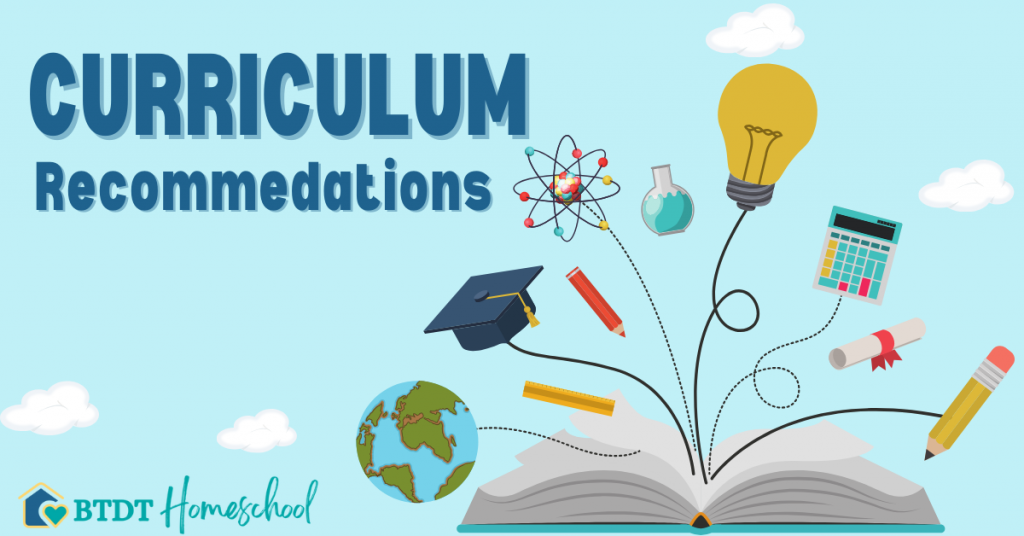
Remember, these descriptions provide a general overview of each homeschooling style, and there can be variations and combinations of methods within each approach. Feel free to explore and adapt different approaches to create a homeschooling experience that best suits your family’s needs and educational goals. Some people start off with one method, and totally regroup as their child gets older. Some may even use a variety of methods with different children in their own home. And that’s the beauty of homeschooling: customizing your experience for your student. There is no right or wrong choice when it comes to selecting a style and curriculum.
Step 3:
Set a Budget (15:59)
Setting a budget for your homeschooling materials is a smart move. Here are some simple steps to help you stay within your budget:
- Determine your maximum budget: Decide on the maximum amount you are willing to spend on homeschooling materials. This will help you prioritize your expenses and make informed decisions.
- Research curriculum costs: Take the time to explore different curriculum options and compare their prices. Look for affordable options that fit your budget. Check online resources, educational stores, or ask other homeschoolers for recommendations.
- Consider additional materials: Keep in mind that some curricula may require extra materials like books, software, or supplies. Factor in the cost of these additional items when evaluating the overall expense of a curriculum.
- Plan for extras: Think about other activities or resources you want to include in your homeschooling journey, such as outside or supplemental classes, field trips, projects, or unit studies. Allocate a portion of your budget for these additional experiences. Get your FREE Field Trip Bundle
- Use budgeting tools: Look for homeschool planners or organizers that include a detailed budget section. These resources can help you keep track of your expenses and stay on top of your financial goals.
More on Homeschooling on a Budget>>
Really do ask around to other experienced homeschoolers about what kinds of costs you can expect to incur. There are plenty of affordable and effective curriculum options available, and even free resources. But at the same time, mind the old adage “you get what you pay for.” Expect to pay for the curriculum purchased because the person who made it put work and talent into that. A lot of homeschool curriculum is written by other homeschool families and this is how they have been able to afford homeschooling. Remember, sticking to your budget doesn’t mean compromising on quality education. By being mindful of your budget and making informed choices, you can provide a great homeschooling experience without breaking the bank.
Step 4:
Learning Style, Needs, and Preferences (19:16)
A curriculum may fit your budget and homeschool values well, but that doesn’t mean it’s the best fit for your student. Every child has a unique learning style, and homeschooling offers the flexibility to tailor their education accordingly. Consider each child’s unique struggles and needs before you select a curriculum. Schools often rely on workbooks and textbooks and traditional group teaching methods, but homeschooling opens up a world of alternative approaches.
Here are some key points to consider when selecting a curriculum that best suits your student’s learning needs and preferences:
Individual Learning Needs
- Take into account your student’s specific learning needs, strengths, and weaknesses.
- Consider their preferred learning style, whether they learn best through visual, auditory, or hands-on methods.
- Think about any specific learning challenges or areas where they may need extra support or accommodations.
Personal Preferences
- Recognize that what works for one child may not work for another.
- Each child has their own interests, learning pace, and preferred methods of learning.
- Consider their preferences for interactive activities, group work, or independent study.
Age and Developmental Stage
- Keep in mind that what was effective for an older sibling may not be the best fit for a younger one and all kids mature at different ages.
- Consider age-appropriate materials and activities that align with your student’s developmental stage.
- Adapt the curriculum to match their readiness and abilities.
Learning Styles
- Visual learners: These students benefit from visual aids, diagrams, and illustrations to understand and retain information.
- Auditory learners: These students learn best through listening, verbal explanations, and discussions.
- Kinesthetic learners: These students learn by doing and engaging in hands-on activities, experiments, and physical movement.
Flexibility and Adaptability
- Remember that homeschooling allows you the flexibility to tailor the curriculum to meet your student’s needs.
- Be open to adjusting and customizing the curriculum as you go along, based on your student’s progress and feedback.
By considering your student’s unique struggles, needs, and preferences, you can select a curriculum that is engaging, effective, and well-suited to their individual learning journey. Don’t be afraid to explore different resources, experiment with various approaches, and adapt the curriculum to create a personalized learning experience that supports your student’s growth and success.
Step 5:
Determine your Level of Involvement (23:07)
Some curriculum options provide detailed lesson plans and do most of the teaching for you. You can supervise and offer support as needed. Other options give you more freedom to teach in your own way while providing a basic overview of concepts. There are also options that fall somewhere in between, allowing you to customize your teaching approach. When it comes to choosing a curriculum for your homeschool, it’s important to think about your level of involvement.
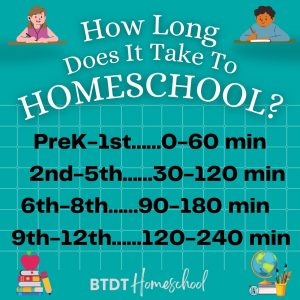
Consider how much time you have available for homeschooling, especially if you have other commitments or work from home. If you’re juggling multiple children and working full-time, you may prefer a curriculum that requires less instructor involvement and is more self-directed. If you have more time to dedicate to one-on-one instruction, you may opt for a program that requires more hands-on teaching.
Remember, the goal is to find a curriculum that fits your unique situation and allows you to create an effective and enjoyable learning experience for your child. Don’t feel overwhelmed by the options—there are plenty of resources available to help you make the right choice. Trust yourself and consider what works best for your family’s schedule and teaching style.
Step 6:
Methodology (25:38)
Mastery vs. Sprial
Mastery approach (where you work on a particular set of skills until you have mastered them) or spiral (different skills are worked on at the same time but continuously circled back to as you slowly build abilities)? Teacher-directed instruction or student exploration? Much like identifying your homeschool philosophy, understanding your teaching method is also crucial.
What is most important to remember when considering the teaching method is the match between the student, the teacher, and the subject.
- Research has shown that students with a learning disability benefit from teacher-directed, error minimized, mastery instruction in the affected area of disability.
- Science often lends itself to more discovery in the structure of lessons allowing for student exploration with a spiral review of needed supporting concepts.
- As students mature, they often need less structure and thrive off of more self-directed exploratory learning. In contrast, some less mature students need more structure and guidance to their learning.
- Many students find hands-on learning to be the most engaging, but some others find it confusing and overwhelming.
Reflect on the subjects or topics that you feel confident teaching. Recognize the areas where you may not feel as comfortable or knowledgeable.
Adequate Instructor Support
If there are subjects or topics that you lack confidence in teaching, look for a curriculum that provides ample instructor support. Choose a program that offers clear explanations, teacher guides, instructional videos, or additional resources to assist you in teaching those subjects.
Consider outsourcing: local brick and mortar, tutor, online
If you feel less confident in certain subjects, you may want to explore other options specifically designed to teach those subjects. Online platforms or tutors can provide expert instruction and guidance in areas where you may need extra support. Many communities now offer local brick and mortar à la carte classes.
Remember, it’s completely normal to have strengths and weaknesses when it comes to teaching different subjects. The key is to find a curriculum that aligns with your comfort level and provides the necessary resources to support your teaching journey. With the right curriculum and additional support, you can confidently guide your child’s learning and ensure a well-rounded education.
Step 7:
Research and Try before you buy (28:47)
Research and Read Reviews: Look for curriculum reviews from trusted sources, such as homeschooling websites, blogs, and forums. Read testimonials from other homeschooling parents to gain insights into how well a particular curriculum worked for them.

Once you follow the 7 STEPS for choosing curriculum, you will look for reviews from trusted sources, such as homeschooling websites, blogs, and forums. Read testimonials from other homeschooling parents to gain insights into how well a particular curriculum worked for them. Cathy Duffy’s website and 102 Top Picks for Homeschool Curriculum is a resource that can help narrow down the choices
In the future episodes, we are going to be doing some curriculum unboxing so you will be able to see up close as we look through the pages of a variety of resources.
Explore educational resources beyond traditional textbooks, such as novels, board games, documentaries, museums, local theater, non-fiction books, DIY projects, online courses, movies, Legos, encyclopedias, and more. Think about the activities your child enjoys in their free time and find ways to integrate their learning style and interests into academic subjects. Download your FREE board game templates!
When researching curriculum, you can also sample lessons. You can do this by viewing them online on the supplier’s website. You can often see sample lessons and reviews on YouTube. This will give you a glimpse of the teaching style, content, and overall structure of the curriculum. If samples are not readily available, don’t hesitate to contact curriculum suppliers and ask if they can provide you with sample lesson pages, either digitally or through mail. Getting a firsthand look at the curriculum will help you assess whether it aligns with your teaching style and your child’s learning preferences. Learn tips and tricks to Keep Learning Fun!
Another valuable resource is the homeschooling community. Connecting with other homeschoolers through forums or social media groups can also provide you with insights and recommendations based on their first-hand experiences.
Once you have access to sample lessons and insights from the homeschool community, it’s time to test-drive the curriculum with your child. By working through a few lessons together, you can assess how well the curriculum engages your child and whether it meets their specific needs. Pay attention to their level of interest, comprehension, and enjoyment during the lessons.
And, like we mentioned earlier, if you’ve unenrolled your student recently, give them time for Deschooling. There’s a good chance that if you’ve just pulled them out of school, there’s not a curriculum on this planet that is going to engage them. They need to decompress from the environment that you just pulled them out of that potentially killed their love for learning. That’s why it’s so important to not skip this step!

Homeschooling can be a tremendous gift to your children—a personalized educational experience tailored to each kid’s interests, abilities, and learning styles. But what to teach, and when, and how? Especially for first-time homeschoolers, the prospect of tackling an annual curriculum can be daunting. In Home Learning Year by Year, Rebecca Rupp presents comprehensive plans from preschool through high school, covering integral subjects for each grade, with lists of topics commonly presented at each level, recommended resource and reading lists, and suggestions for creative alternative options and approaches.
Choosing curriculum looks different at all ages and stages. (33:00)
It’s important to know that a child’s biological age does not always correlate with their “readiness” and their ability to comprehend a concept or develop a skill.
Preschool/Kindergarten (Ages 2-6)
It’s about learning through life and play. This age range is ideal to pick some simple goals for – things like life skills, language development, large motor skills (climbing on the playground) and some basic fine motor skills (how to hold a crayon.) This age should be non-pressure, non-stress for learning. Everything can be learned via play.
This can be the start of early academic goals – such as learning to recognize letters and sounds or understanding and recognizing numbers up to 5. Another goal could be to learn how to print their name. This age group is also the perfect time to have goals around easy chores such as emptying the dishwasher, cleaning up toys, and putting laundry away. Be sure to check out our PRESCHOOL PAGE and Teaching your child HOW TO TO READ page and episode where we give a lot of tips and free resources for those early years.
Elementary learners
Elementary age homeschoolers are learning foundational skills in core subjects such as reading, writing, and mathematics. In language arts, they focus on phonics, vocabulary, grammar, and writing skills. Reading comprehension and fluency are also essential aspects of their literacy development. In mathematics, they explore basic operations, number sense, fractions, geometry, and measurement.
Science may include more hands-on experiments and observation-based learning and social studies is introduced to help them understand the world around them. Art, music, and physical education are also valued components of their education. Homeschoolers at this age are encouraged to pursue their personal interests and engage in independent reading. They may explore topics like space, dinosaurs, oceans, or any other subjects that capture their curiosity. The aim is to foster a love of learning, encourage critical thinking, and develop a strong foundation for future academic pursuits.

Middle School
If you have a new middle schooler, this is a great time fostering more independence. Middle school homeschoolers continue to build upon the foundational skills they acquired in elementary school while expanding their knowledge across various subjects. They explore more complex concepts and begin to develop critical thinking and analytical skills. Middle school homeschoolers focus on enhancing their reading comprehension, engaging in literature studies and developing effective writing abilities. They learn to solve more complex equations and concepts and expand their scientific knowledge and develop their understanding of scientific principles. They develop an understanding of government structures, citizenship, and civic responsibilities. Many middle school homeschoolers begin learning a foreign language during this period and have the opportunity to explore various elective subjects based on their interests. These can include art, music, computer science, coding, physical education, health, home economics, or other specialized subjects that allow them to pursue their passions.
Overall, middle school homeschoolers aim to develop a solid academic foundation while nurturing their critical thinking skills, independent learning abilities, and self-motivation. They are preparing for the transition to high school by acquiring a broad knowledge base and honing their study and organizational skills.
High School
High school is generally where classes get more specialized. In general, classes are divided into two sections: core subjects and electives. Core subjects are math, sciences, language arts, and social studies. Planning a general overview of the full high school experience can be helpful to organize what subjects you are going to complete when. There is also a lot finer tuning involved in planning high school curriculum as you begin to really focus on and prepare your student for what is going to happen after high school and beyond. Our high school series will walk you through this entire process and go into a lot more detail than what we have time for in this episode so definitely give it a listen.

Lastly, when choosing a curriculum, think about setting specific goals. For example, what do you hope to achieve or what do you want your child to learn? About life? What is the purpose of education? What is your ultimate goal for your child?
There are lots of wonderful curriculums out there, but sometimes as fun as they may seem, these curricula may not help reach your goal and your goal may change based on the means of your family. A lot of homeschoolers like to create a vision board for the year. We talked about this in our planning for your school year episode. Learn more about Planning Your Homeschool Year>>
Remember, finding the perfect curriculum is a journey, and it’s okay to make adjustments along the way. If you discover that the curriculum you initially chose isn’t the best fit for your child, don’t worry. Homeschooling grants you the flexibility to switch to a different curriculum that better suits their learning style and needs. The key is to approach the curriculum selection process with an open mind and a willingness to try different options. By taking the time to explore samples, seek advice from the homeschool community, and test-drive the curriculum, you can make an informed decision that sets your child up for a successful and enjoyable experience. Homeschooling offers incredible flexibility and the opportunity to tailor your child’s education to their individual needs and interests. Embrace this flexibility and adapt your approach as you discover what works best for your child. Remember to enjoy the journey and celebrate the unique experience of homeschooling together.
Facebook Resource Group:

As we mentioned before, homeschoolers really love to help each other out and share free resources. Many local groups do curriculum swaps and there are a lot of Free homeschool resources Facebook groups. Just this week we created a brand new Facebook group for the sole purpose of sharing free and low cost homeschool resources. Since the popularity of homeschooling has grown so much since Covid, a lot of our go-to groups have been flooded with SPAM and it can be hard to sift through all that. So, we created a new group called Homeschool Freebies & Support for Pre-K-12th. Join us and get all the goods!


